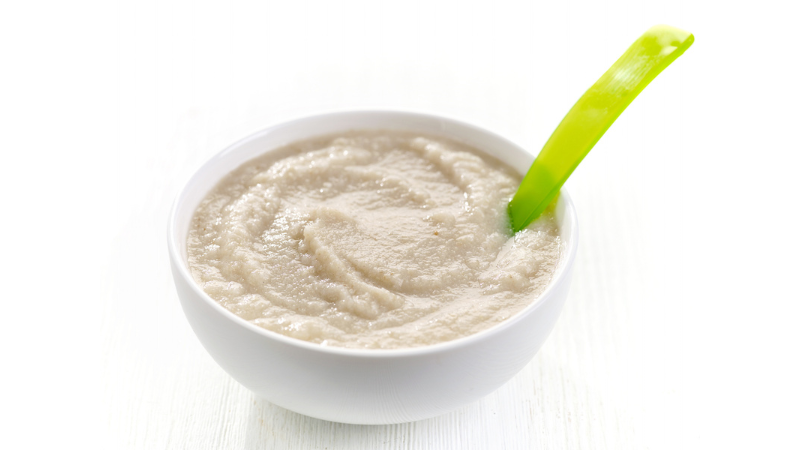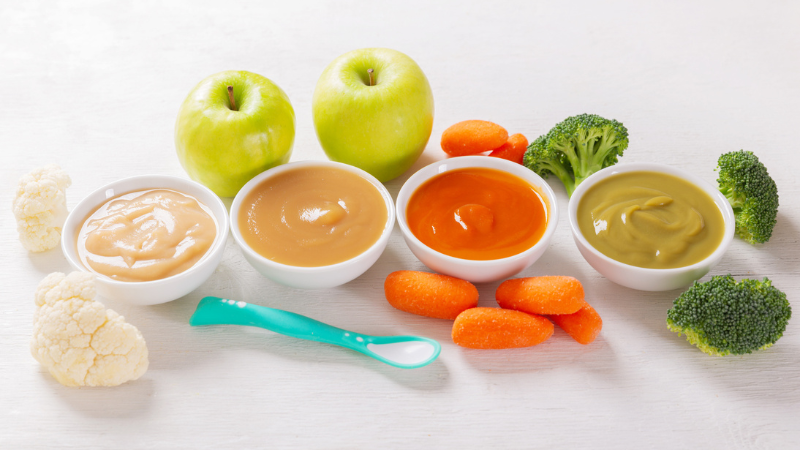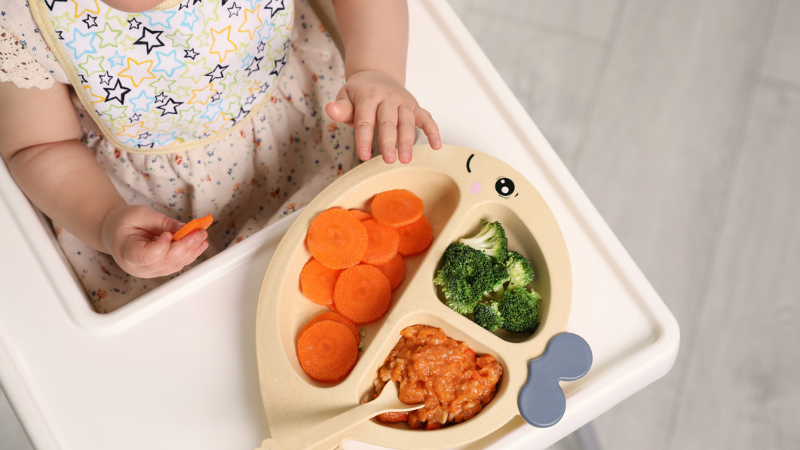For the first six months, your baby’s nutritional needs are fully met with breastmilk or infant formula. These provide all the essential vitamins and nutrients to support healthy growth and development. But sometime between four and six months, your little one may start showing signs that they’re ready to try “real” food.
You can begin introducing solids around six months, keeping in mind that your baby will only consume small amounts at first. Start with one meal a day and gradually increase to two or three. By eight to nine months, solids can become a regular part of breakfast, lunch, and dinner. Between six and nine months, offer breastmilk or formula first, followed by solids. From nine months onward, switch it around—start with solids and follow up with milk. This gradual shift helps ease your baby into a full transition to solids by around 12 months.
How to Tell Your Baby Is Ready for Solids
Your baby may be ready to try solids if they:
- Can hold their head up steadily
- Sit with minimal support
- Have lost their tongue-thrust reflex (which pushes food out of the mouth)
- Show interest in what you're eating
Introducing solids is a big milestone — it can feel exciting and nerve-wracking at the same time. The key is to keep it stress-free. In the first year, solids are mostly about exploration and complementing milk feeds, not replacing them.
Here’s how to set your baby up for feeding success:
1. Start with Iron-Fortified Baby Rice

When introducing solids, start with iron-rich foods. Iron-fortified baby rice is a great first choice — it's gentle on the tummy and unlikely to cause allergies. Feed the same food for three to four days and watch for any signs of a reaction, such as rashes, swelling, vomiting, or diarrhoea.
Once tolerated, you can branch out to cereals containing wheat or oats. Mix 1–2 teaspoons of cereal with breastmilk or formula — this familiar flavour helps encourage acceptance.
2. Gradually Introduce Fruits and Vegetables

After rice and cereal, start adding single-ingredient fruits and vegetables. For veggies, try cooked and pureed pumpkin, sweet potato, carrots, peas, or zucchini. As your baby gets used to these, gradually make the texture thicker.
When it comes to fruit, options include pureed apples, pears, bananas, berries, or peaches. Avoid offering large chunks of raw fruit — especially apples — as they pose a choking hazard.
3. Keep the Texture Smooth and Runny

Your baby’s first meals should be silky-smooth purees. Think oatmeal - thin consistency. Use a blender or food processor to get the right texture. Over time, move from purees to finely mashed foods, then soft lumps by around nine months.
4. Use the Right Spoon
![]()
Choose a baby spoon with a soft silicone tip to protect delicate gums — even if your baby bites down. A flat-tipped spoon is even better — it helps you scoop up stray bits and offer them again with ease.
Avoid putting cereal or food into your baby’s bottle, as this can interfere with their ability to learn how to eat from a spoon while sitting upright.
5. Take It Slow

Always nurse or bottle-feed first, then offer solids. Early on, your baby may only take a few spoonful — and that’s perfectly okay. If they’re uninterested, try again in a few days. No need to force it.
6. Encourage Self-Feeding

Let your baby explore! Offer a spoon for them to hold, and feed them in between their own attempts. Yes, it’ll be messy — but it’s a great way for your little one to develop fine motor skills and confidence.
7. Introduce Finger Foods Around 9 Months

At about nine months, your baby can handle finger foods like soft fruits, cooked veggies, or small pieces of tender meat. Cut food into fingertip-sized pieces to prevent choking.
This is also a good time to offer sips of water from a Sippy cup during meals. Skip sugary drinks like juice — they’re not recommended for infants.
What Not to Do When Weaning
- Don’t put food in a bottle.
- Avoid offering food larger than your baby’s fingertip.
- Don’t give hard or choking hazard foods (e.g., whole grapes, uncut bread slices).
- Avoid giving cow’s milk before your baby turns one.
- Don’t force-feed. Healthy babies know when they’re full.
- Don’t give up too soon—babies often need multiple exposures to new foods before accepting them.
Need Help?
If you’re feeling unsure about the weaning process, consider speaking with a professional. Thomson ParentCraft Centre offer hands-on guidance to make introducing solids smoother and more enjoyable for both you and your baby.
